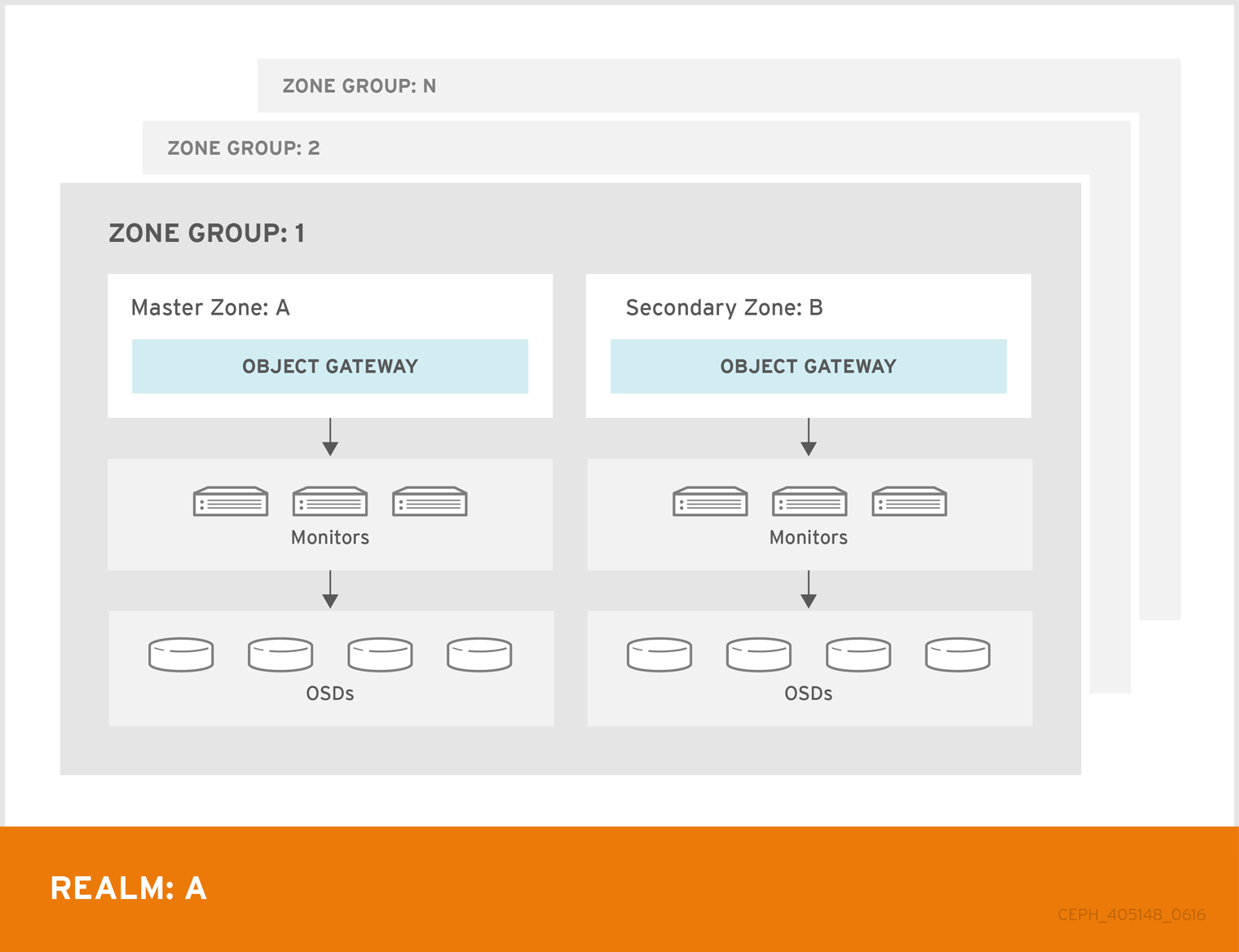Este contenido no está disponible en el idioma seleccionado.
Chapter 7. Additional Use Cases
Once the cluster is up and running, there are additional use cases to consider.
7.1. Expanding the Cluster with Multi-site
When developing storage strategies, the procedure for Creating a Realm ensured that the cluster is already configured to use multi-site with its own realm, master zone group and master zone.
A typical production cluster will have a secondary zone with its own Ceph Storage Cluster in a separate physical location to act as a backup in the event of a disaster. To set up a secondary zone, repeat the procedures in this guide. Generally, the secondary zone should have the same hardware configuration and sizing as the master zone. See Configuring a Secondary Zone for additional details.
Adding a secondary zone adds Failover and Disaster Recovery capabilities to the cluster.
7.2. Migrating Data with NFS Ganesha
If the Ceph Object Gateway and Ceph Storage Cluster replaces a filesystem-based storage solution, consider using Ceph’s NFS-Ganesha solution to migrate data from the file system into Ceph Object Gateway.
7.3. Configuring the Cluster for Static Webhosting
Traditional web hosting sometimes involves setting up a web server for each website, which can use resources inefficiently when content doesn’t change dynamically.
Ceph Object Gateway can host static web sites in S3 buckets—that is, sites that do not use server-side services like PHP, servlets, databases, nodejs and the like. This approach is substantially more economical than setting up VMs with web servers for each site.
See Configuring Gateways for Static Web Hosting for additional details.
7.4. Configuring the Cluster for LDAP/AD
Organizations deploying Ceph Object Gateway for their users and applications may choose to use Light-weight Directory Access Protocol (LDAP) or Microsoft Active Directory (AD) to authenticate with the Ceph Object Gateway in lieu of creating Ceph Object Gateway users.
Using LDAP/AD means that Ceph Object Gateway can integrate with an organizations LDAP/AD single sign-on initiatives.
See the Ceph Object Gateway with LDAP/AD Guide for details.
7.5. Configuring the Cluster to use OpenStack Keystone
When deploying the Ceph Object Gateway in lieu of OpenStack Swift, it is possible to configure the gateway to use OpenStack Keystone to authenticate users in lieu of creating Ceph Object Gateway users.
See Using Keystone to Authenticate Ceph Object Gateway Users for details.
